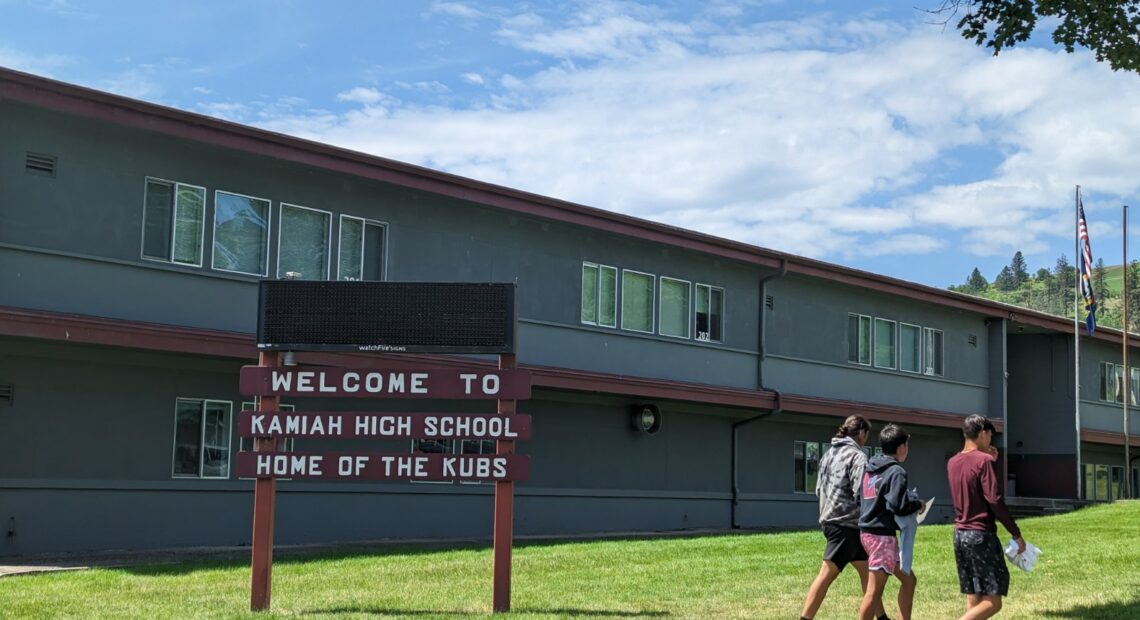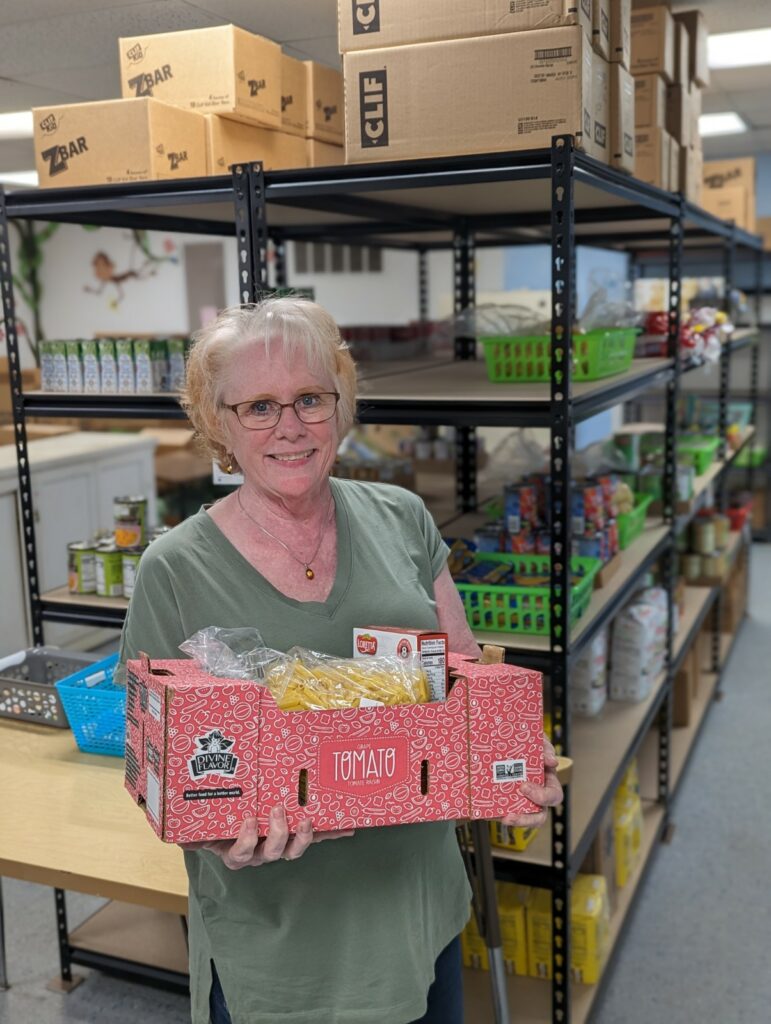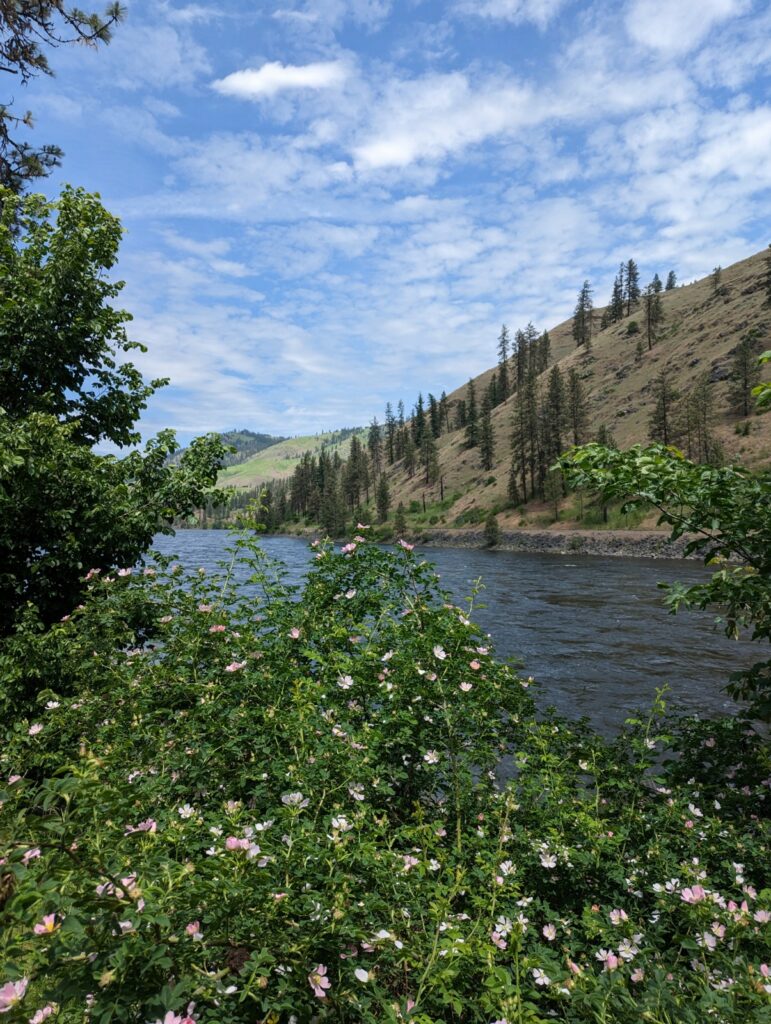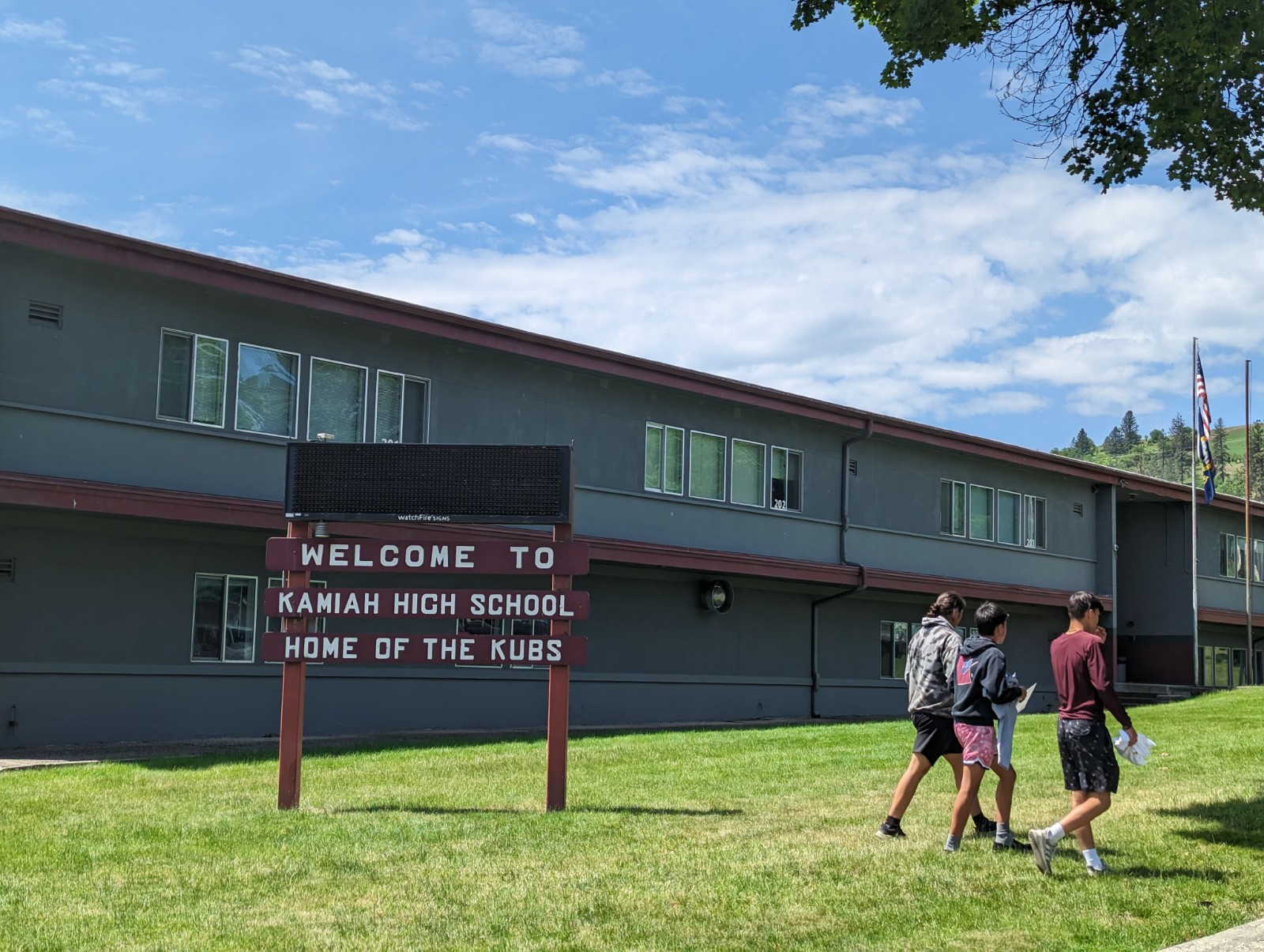
Idaho’s homeless student population increasing amid housing crisis
Listen
(Runtime 3:48)
Read
The Kamiah School District in North Idaho serves around 400 students. About 10% of those students are homeless, said Terry Law, the district’s family support liaison.
“We think of homelessness as kids sleeping on the streets or in a car with a sleeping bag, or not with a parent. And that is a population we have had in the past,” said Law. “But it also, by the federal law, is any student who isn’t with their parent or guardian. So that broadens it completely.”
The definition could include staying with their grandparents or with friends.
One of Law’s first projects for the district was to put together a food bank for students struggling with unstable housing. It’s also a community food bank, where the whole family can get help.

Terry Law holds a box of food pantry items ready for a family in need. (Credit: Lauren Paterson / NWPB)
Smaller school districts like Kamiah don’t have the same resources as bigger areas.
“I don’t have shelters, not within our school district, not within 75 miles of our school. Rural versus urban is night and day,” said Law.
Sometimes students live in tents, or in a structure with no electricity or running water, where the only heat comes from the wood stove, said Law.
Another challenge is safety, she said.
“That’s usually my very first question I ask a student when I find out they’re homeless, ‘Are you safe?’ Because they aren’t always safe.”
Law said she works with the local hotel to get students out of unsafe situations until she can help them find temporary housing.
“Calling CPS, calling law enforcement sometimes. You know you can have a runaway that ends up being taken in by somebody who is, say, a registered sex offender. That child doesn’t know who that person is,” said Law.
1987’s McKinney-Vento Act ensures federal protections for homeless children and youth and guarantees students have ongoing support and access to education … regardless of their housing status.
Down in Boise, Emily Sommer is the McKinney-Vento coordinator for the State of Idaho. She works with 192 liaisons across the state, like Law.
“We’ve seen a steady increase of students experiencing homelessness in Idaho,” said Sommer.
For the 2021-2022 school year, more than 8,300 students were identified as experiencing homelessness, said Sommer. “This last year [2022-2023] we had over 9,000 students.”
The Mckinney-Vento Act defines homeless children as: “individuals who lack a fixed, adequate nighttime residence.” This definition includes children who are sharing a home due to economic hardship or loss of housing, also called “doubled up.”
There are numerous reasons for the uptick, said Sommer.
“Some attribute it to poverty, mental illness, addiction, and those certainly play a part in identifying those who are most vulnerable to experiencing homelessness. But there are other factors as well,” said Sommer.
Domestic violence, abuse and neglect, family medical expenses, natural disasters and a lack of affordable housing are also big reasons students in Idaho end up homeless, Sommer said.
Back in Kamiah, finding affordable housing for struggling families in a small rural town is a big challenge, said Law.

A view of the Clearwater River near Kamiah, Idaho. Newcomers moving to small rural towns like Kamiah means fewer housing options for locals in need. (Credit: Lauren Paterson / NWPB)
“And with everyone moving into Idaho now, the properties have just skyrocketed. So where there used to be little houses that could be rented, they’re gone now,” said Law. “I’ve been working with a family … there’s a waitlist of 45 people ahead of them for a house.”
As she locks up the community food pantry for the day, Law said its hours are changing after the school year ends.
“Technically, I’m supposed to close for the summer. But I can’t do that to these families,” said Law.
The pantry will be open for one day a week instead of two, she said.
Food and clothing items to assist struggling students and families can be donated by contacting the Kamiah School District.
More from NWPB’s coverage of homeless students in the Northwest:
Two districts, the same dilemma: Not enough shelter spaces
Tacoma schools seek housing resources as district with most homeless students
















